Click here to read Super Simple Book Based Science Experiment for Kids on Hands On As We Grow
A silly and simple book based science experiment, from Alisha, that ties together a love for reading and an appreciation for scientific exploration.
Making connections with literature is a life-long learning strategy that enables children to embrace the joy and wonder found in books.
Super Simple Book Based Science Experiment for Kids
This capsizing canoe book based science experiment brings the beautiful picture book, “One-Dog Canoe” by Mary Casanova, (affiliate link) to life.
Try these 30 kid-friendly experiments for more science fun!
There are only a few basic supplies needed for this science experiment:
- “One-Dog Canoe” book (at your local library or order online)
- Aluminum Foil
- Container with water
- Animal Figurines (affiliate link) or any small objects
- Bowl for objects
- A towel
To start, cuddle up on the couch or in a special space and enjoy reading “One-Dog Canoe” together.
Increase literacy and learning by having your child recall the order in which the animals boarded the canoe. Connect reading with math and have your child count the number of animals in the canoe as well.
This story is so engaging and fun. Don’t be surprised if your child wants to read “One Dog Canoe” again and again!
When you’ve finished reading, it’s time to start your experimenting.
Build Your Boat for a Float/Sink Experiment
All good experiments are guided by a central question. And our experiment is no different.
If we made our own canoe, how many animals would it hold before flipping or sinking?
Talk through the question with your child and introduce the idea of a hypothesis. A hypothesis is really just a prediction of what you think might happen.
Once your child has made their prediction or hypothesis, jump into making your canoe.
Begin by folding a larger piece of foil in half. Then fold the edges inward to make walls.
Keep scrunching the edges together until they form a rim of a canoe. Keep the bottom nice and flat.
Your boat doesn’t have to be perfect. It just needs to be able to float and hold objects inside of it.
Scrunching up aluminum foil is great fine motor practice. It’s also a lesson in trial-and-error that you can learn together.
I tried this activity first to find the best technique before I shared the experiment with my kids.
For the actual experiment, ee made three canoes. I think they did a pretty good job, even this a few false starts.
If you have older kids, they could definitely do the canoe making themselves.
Will Your Canoe Sink or Float?
Once your main canoe is made, it’s time to set sail.
If you’re worried about a mess, lay down a towel under your water container. Or take the experiment outside.
Say “Bon Voyage” to your canoe and place it on the water to see if it floats.
This step alone is a great experiment!
Once your canoe floats, you’re almost ready to add the animals.
Ask your main question again: how many animals will your canoe hold before it goes under water?
Invite your child to estimate how many animals will fit. “Will we get to seven, like in the book?”
Your little scientist will be thinking now!
Write down your child’s estimated answer. After the experiment, check to see if you were right.
Gather your animals and begin adding them one at a time.
If you’re using animals, try adding them just like in the story. Have each animal ask: “Can I come, too?”
Keep filling the canoe until it sinks or flips over. If you run out of objects, just grab more of something else.
Talk About the Real Science Behind Your Boat
You’ll be sure to impress your kids by discussing buoyancy and water displacement!
The reason it took a certain amount of animals to capsize (sink) the canoe is due to the fact that the weight inside the canoe needed to be more than the amount of water displaced (moved away from the canoe). When there is too much weight, the canoe isn’t buoyant (able to float) any longer.
That’s a lot of big words, so definitely explain this in a way that your child will understand. Getting hands-on and redoing the experiment might help.
Take Your Book Based Science Experiment a Step Further
Keep your sink and float fun going. Ask your child to predict, or hypothesize, whether a smaller or bigger canoe would hold more animals.
Then, test it out!
You’ll find that the larger canoe can hold more weight because it displaces or pushes more water out of the way, while the smaller would hold less weight due to being less buoyant.
We tested out different variations of this experiment based on canoe size, amount of animals, different types of animals, and depth of the water.
Then my kids chose to make this a sensory activity!
They enjoyed playing with everything in the container of water. They even got their feet wet!
Kids will be kids and they had a blast!
However you end up tweaking this book-based experiment, it will bring and your children joy in learning. Your child will love exploring and feeling like a real scientist!
How many animals did it take for your canoe to capsize? Share your favorite sink and float activities in the comments!
from Hands On As We Grow https://ift.tt/2NePDsZ
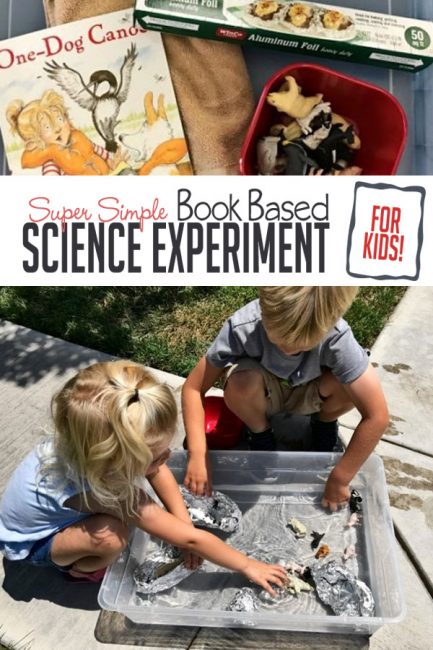
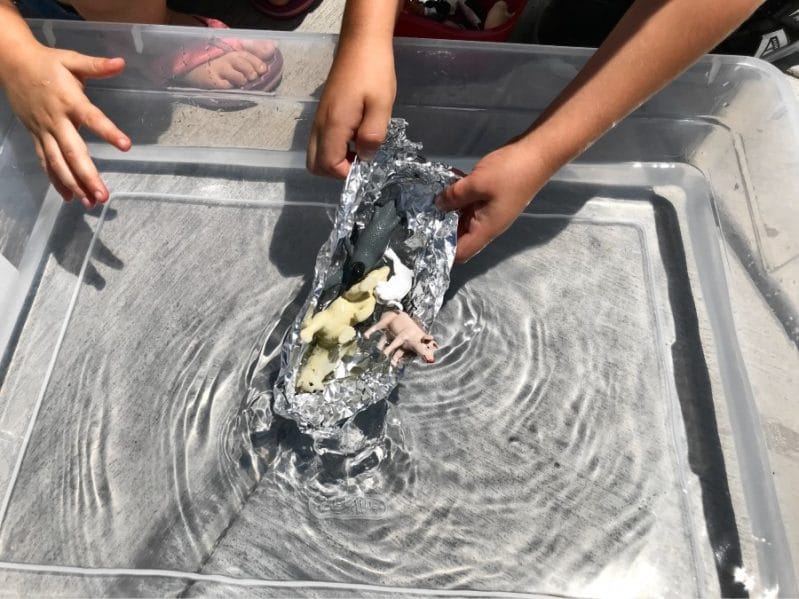
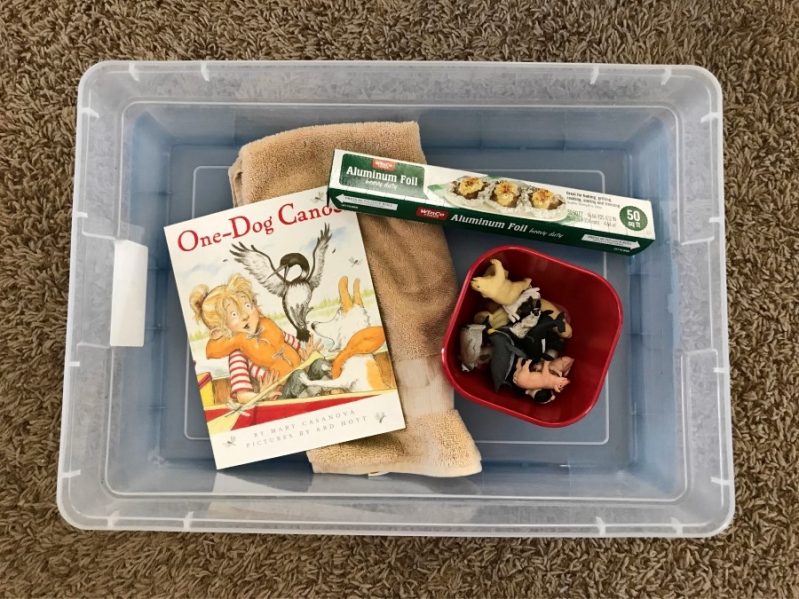

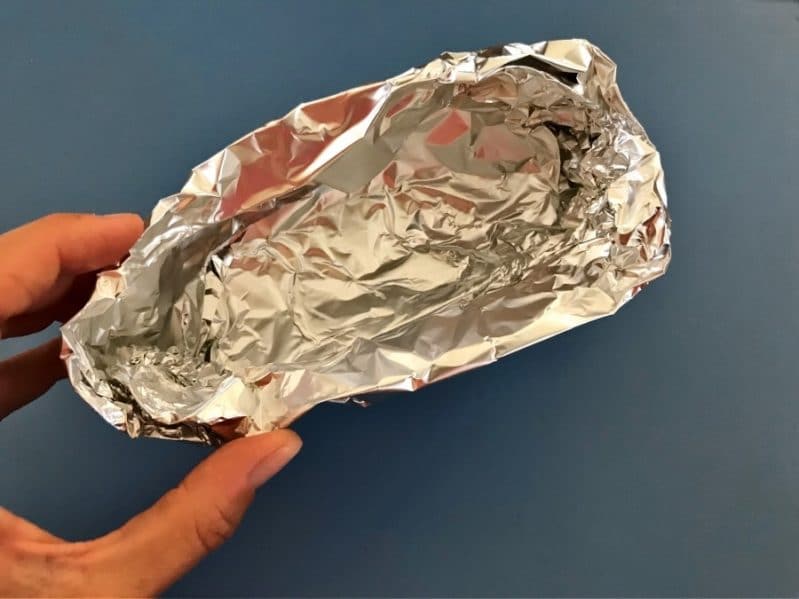

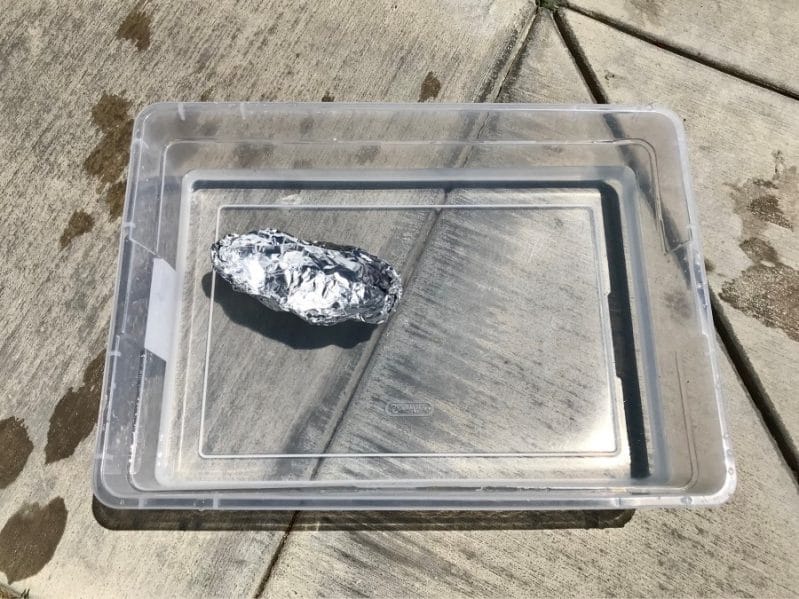
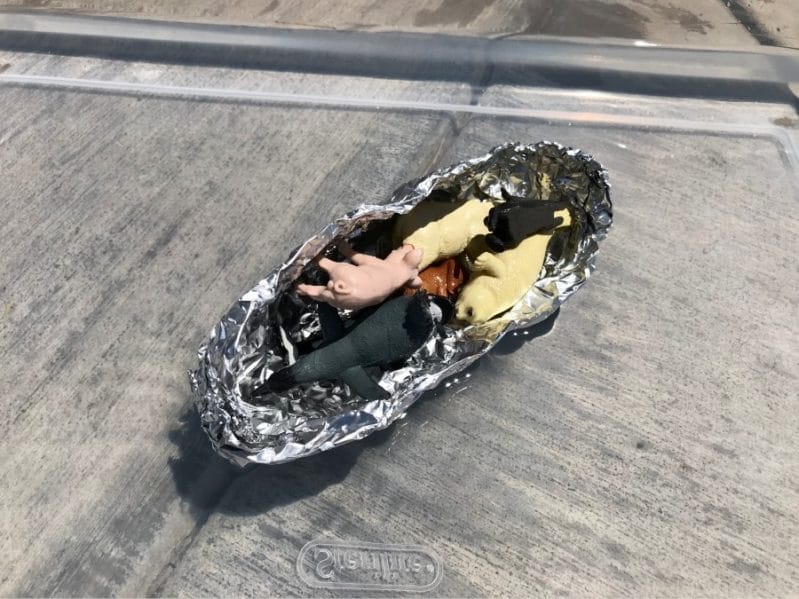
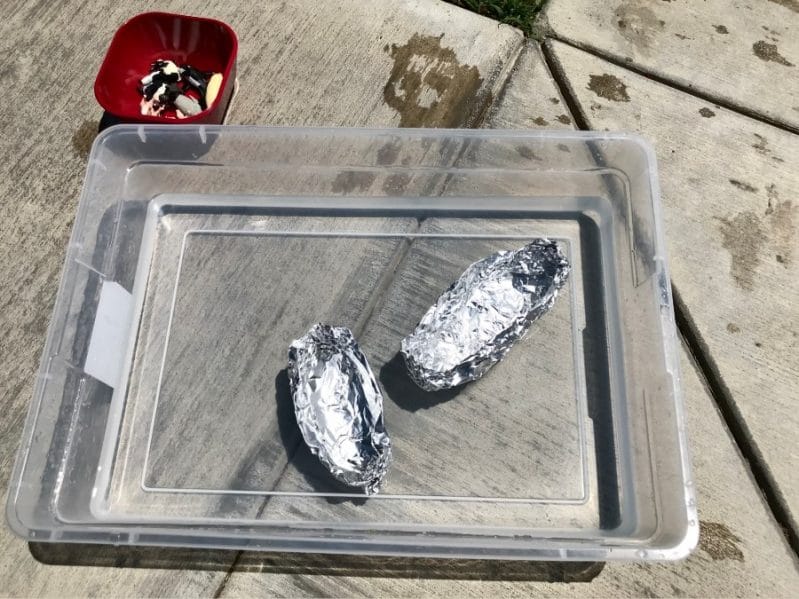

No comments:
Post a Comment